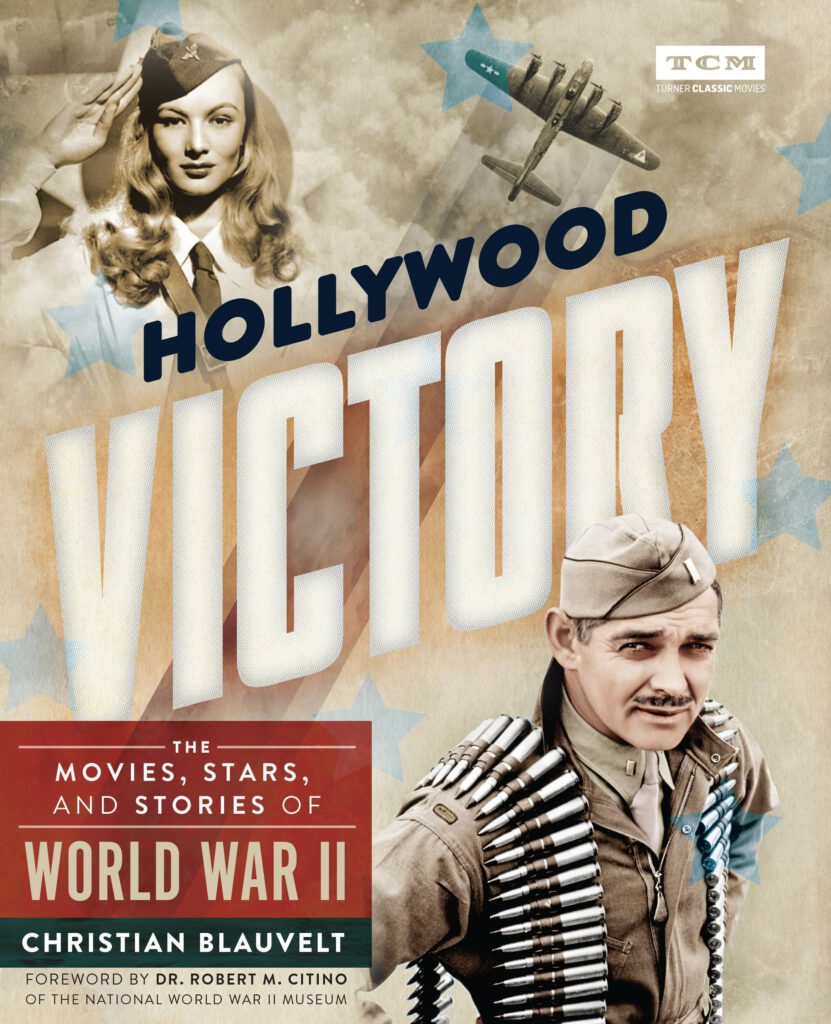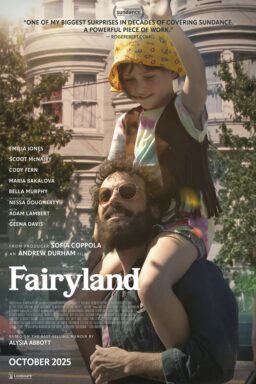We are pleased to share an excerpt from Christian Blauvelt’s new book, Hollywood Victory: The Movies, Stars, and Stories of World War II. To order your copy of the book, click here.
THE GOOD NEIGHBOR POLICY VS. THE MAGNIFICENT AMBERSONS
Just at the moment that Huston and Hope were leaving for the far north, Orson Welles was returning from way down south. Down South American way, specifically. He had spent over six months in Rio contributing to the Good Neighbor Policy, easily making him the most high-profile Hollywood talent to spend significant time in Brazil since Walt Disney. It’s hard to overstate how critical diplomatic outreach to the “ABC” countries—Argentina, Brazil, and Chile—was at that moment. The March 2 Life magazine spread that imagined six possible invasion scenarios for the Axis to attack the United States included South America: “Plan Four is the much-discussed invasion by way of Gibraltar-Dakar-Natal-Trinidad, which President Roosevelt’s Good Neighbor Policy has tried to defend against.” Natal, one of Brazil’s easternmost cities, would have made an ideal rallying point for Axis land and long-range air forces to regroup after crossing the Atlantic. In fact, before she’d died, Carole Lombard had even been planning a speech praising the culture and character of the ABC countries to help the Good Neighbor Policy. A copy of the speech in her handbag had helped Eddie Mannix identify her body.
Carmen Miranda’s career had only grown since her breakout Hollywood smash, Down Argentine Way (1940). Early in 1941 she was invited to be the first Latin American star to enshrine her handprints and footprints in a cement block outside Grauman’s Chinese Theatre. Her next films for 20th Century Fox, That Night in Rio (1941) and Week-End in Havana (1941), built on Argentine’s success. As you can tell, each of these movies was set in a different country: Zanuck’s idea for casting as wide of a net for the Good Neighbor Policy as possible. But box-office success aside, Miranda was still beholden to a deeply unfair original contract she’d signed with the Shuberts—the producers who first brought her to America to star on Broadway—which gave them half of her earnings. Don Ameche, costar in her first two films, helped her negotiate more equitable representation, and visibility. With Miranda now getting second billing, Week-End in Havana bowed just one week after Citizen Kane expanded nationwide and immediately dethroned it from the top of the box office. Kane was only ever number one in that first weekend.
Welles may have had other reasons to commit such a significant chunk of 1942 to his Brazil trip. As being dethroned so quickly from the top of the box office might suggest, Citizen Kane had lost $160,000 in its initial run. In October 1941 he’d begun work on The Magnificent Ambersons (1942), production of which stretched into January, but relations with his distributor, RKO, were becoming strained. Nelson Rockefeller—a major stakeholder in RKO, and now the head of the OCIAA in charge of Good Neighbor Policy work—had John Hay Whitney reach out to Welles about becoming a goodwill ambassador. The night of Pearl Harbor, Welles said on the Gulf Screen Guild Theater radio show, “We’ve got a nerve calling ourselves Americans all the time, when we’re really only United Staters. We’re a little selfish about that. It’s America down there in Chile too, all the way down the spine of the Andes. If any of you folks are hearing this down around Mexico, or Honduras, or Salvador, or Argentina . . . or even if you’re an Eskimo in the Arctic, we hope you’ll overlook our calling ourselves Americans as if we were the only ones in the hemisphere. We do that just because it’s so much easier to say than anything else . . . and also because it sounds so good.”
On December 22, Whitney telegrammed the director with an offer to make a documentary about Rio’s Carnaval: “Personally believe you would make great contribution to hemisphere solidarity with this project.” But before he could leave, Welles not only had to finish Ambersons, he had to act in Norman Foster’s fellow Mercury Theatre film Journey into Fear (1943) in January 1942—and he had to give sufficient notice to CBS about winding down his weekly radio show. Welles was starting to take on so much work that it was inevitable he would take his eye off certain projects. Acting in Journey into Fear (plus, handling some uncredited directing work on it, and rewriting the script with Joseph Cotton), while finishing up directing Ambersons, and then departing for Rio to make his Carnaval documentary—trusting Ambersons’ final cut to his editor Robert Wise and RKO—was highly unwise. The cast and crew on Journey into Fear worked for twenty-four hours straight to finish Welles’s scenes before he departed. By that point Welles had decided that his Carnaval footage would comprise just one segment of an anthology film—kind of like live-action versions of the anthology films Disney was making from his Good Neighbor trip. He already had one segment done and dusted: a short filmed in Mexico by Foster the previous year called My Friend Bonito, about a young boy’s friendship with a bull destined to face a matador in the arena.
“It’s All True was not going to make any cinematic history, nor was it intended to,” Welles said after the war. “It was intended to be a perfectly honorable execution of my job as a goodwill ambassador, bringing entertainment to the Northern Hemisphere that showed them something about the Southern one.” On a pit stop in Miami, he threw together a rough cut of Ambersons with Wise, and recorded the narration you hear in the film. “I went to the projection room at about four in the morning, did the whole thing,” Welles said of his final work on Ambersons, which took place February 4. “And then got on the plane and off to Rio—and the end of civilization as we know it.” He started shooting Carnaval four days later. In addition to his filming work, he’d make radio broadcasts both to the Brazilian people and aimed back at the United States with messages of goodwill from Brazil. One broadcast for NBC Blue on April 18 was simply titled “President Vargas’s Birthday,” a half-hour tribute to the strongman running the country. He’d give in-person lectures and talks to local audiences on subjects such as visual art and Shakespeare, much like Disney’s “El Grupo” had. Disney’s staffers on that trip were at least being paid. Welles, dedicated to the idea of this cultural outreach as pure service, neither received nor requested any payment. It was his pleasure to be a cultural ambassador. It’s also possible he had a covert additional role: to gather intelligence for use in the war about what Vargas and his neighbors were really up to. This was all too much for any one person to handle and expect to keep their vision on their film projects intact. To use the kind of language Welles often employed on his radio shows . . . little did he know that what followed next would result in total disaster.
Film historian Catherine L. Benamou puts it like this: “The ambassadorial appointment would be the first in a series of turning points leading—in ‘zigs’ and ‘zags,’ rather than in a straight line—to Welles’s loss of complete directorial control over both The Magnificent Ambersons and It’s All True, the cancellation of his contract at RKO Radio Studio, the expulsion of his company Mercury Productions from the RKO lot, and, ultimately, the total suspension of It’s All True.” After the Pan Berman / Samuel Briskin era at RKO, the studio fell into the hands of George Schaefer, the most supportive backer Welles ever had in Hollywood and would ever have. But after major financial losses in 1941 and 1942, Schaefer was out as studio president, and so was his ally on the board: Nelson Rockefeller, who had arranged for Welles to go to South America in the first place. Charles Koerner took over in June 1942 and announced a new motto for the studio: “Showmanship in Place of Genius: A New Deal for RKO.” Welles knew this was a swipe at him.
Without the director’s input, RKO ordered Wise to cut forty-three minutes from the preview version of Ambersons, which had already been cut by seventeen minutes. Wise complied. He maintained throughout his life that he was proud of the eighty-eight-minute final cut, which had a shabby new “happy” ending (admittedly much like that of Booth Tarkington’s original novel). Composer Bernard Herrmann did not feel likewise. He ordered that his name be taken out of the credits. Welles said he never would have gone to South America if RKO had not given him assurances he would be allowed to finish editing the film there. “And they absolutely betrayed me and never gave me a shot at it,” he said. “You know, all I could do was send wires . . . But I couldn’t walk out on a job which had diplomatic overtones. I was representing America in Brazil, you see. I was a prisoner of the Good Neighbor Policy. That’s what made it such a nightmare. I couldn’t walk out on Mr. Roosevelt’s Good Neighbor Policy with the biggest single thing that they’d done on the cultural level, and simply walk away. And I couldn’t get my film in my hands.”
RKO did in fact send Welles a full-length workprint of Ambersons for him to fiddle with while in Rio. That has enticed cinephiles ever since to think that it might still be sitting somewhere in Brazil, awaiting recovery and restoration, to this day. Otherwise, what is known to be true is that the studio took those excised portions of the film and destroyed them. Welles’s theory was that since the studio was restructuring, it actually made better financial sense to Koerner to play up the expense of the film, the losses incurred—Ambersons lost $620,000 in release, compared to Kane’s $160,000—and use the failure as a tax write-off. That was actually more lucrative than if the film had been a hit.
Seeking to sever ties with Welles altogether, RKO, unconcerned about appearing unpatriotic by breaking off their commitment to the Good Neighbor Policy, then did the same thing to It’s All True. They canceled the film, rendering Welles’s time in Rio, aside from his lectures, radio broadcasts, and in-person forms of cultural outreach, a waste. He had shot two hundred thousand feet of film at Carnaval. In the late sixties or seventies, RKO’s new corporate overlords (it had long since ceased to be an actual studio) dumped that footage into the Pacific Ocean. “It was a tax write-off, so they lost nothing,” Welles later said. “Otherwise they would have been struggling to get something out of it. However bad, they could have made a bad musical out of just the nightclub footage. They would have got a return on their money. But they didn’t want a return on their money. It was better for them to drop it in the sea, which is what they did.”
Welles’s time in Rio had come to an end. “So I was fired from RKO,” he later recalled. “And they made a great publicity point of the fact that I had gone to South America without a script and thrown all this money away. I never recovered from that attack.” Welles’s Hollywood fortunes would never be the same. All his more ephemeral, in-person cultural diplomacy may have helped tie Brazil that much closer to the United States, however. He had lost his creative battles, and he’d have to fight a virtual war to get every single one of his films made after this. But in his own way, he’d helped his country win the war.
As Welles was preparing to leave, Disney finally unveiled the fruits of its South America trip, the compilation film Saludos Amigos, on August 24, 1942, with a world premiere in—where else?—Rio de Janeiro. Intended not as a moneymaking endeavor but as goodwill outreach, the film actually surprised by grossing over $1 million in worldwide box-office rentals, meaning that the subsidy the government had promised Walt Disney wasn’t needed at all. And just two days before that Rio premiere, Brazil declared war on the Axis powers.
Disney’s and Welles’s efforts can be summed up simply: mission accomplished. Saludos Amigos “did more to cement a community of interest between peoples of the Americas in a few months than the State Department had in fifty years,” film historian Alfred Charles Richard Jr. said.
As Welles was about to board the plane back to the States, he found himself captivated by a woman on the cover of Life magazine: it was Rita Hayworth.
He told his companions that he was going to find this woman and marry her.
Excerpted from HOLLYWOOD VICTORY: The Movies, Stars, and Stories of World War II by Christian Blauvelt. Copyright © 2021. Available from Running Press, an imprint of Hachette Book Group, Inc.
To order your copy of HOLLYWOOD VICTORY, click here.











